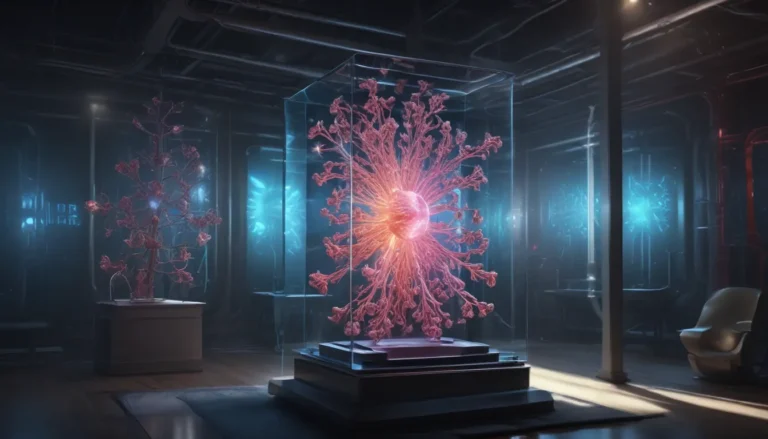A Note About Images: The images used in our articles are for illustration purposes only and may not exactly match the content. They are meant to engage readers, but the text should be relied upon for accurate information.
Are you ready to uncover the secrets of the peritectic system? This unique phenomenon in the realm of chemistry involves a delicate dance between solid, liquid, and gas phases, creating a fascinating equilibrium state. By delving into the intricacies of the peritectic system, we can gain valuable insights into the behavior of various substances and their phase transitions.
The Essence of Peritectic Systems:
- Definition: The peritectic system is a specific region on a phase diagram where a solid phase and a liquid phase combine to form a new solid phase at a precise temperature and composition.
- Metallurgical Significance: Crucial for metallurgical processes, impacting the microstructure, properties, and performance of alloys.
- Unique Transformation: Differs from other phase transformations, like eutectic and monotectic systems, offering distinct characteristics and behaviours.
Crafting the Peritectic Puzzle:
- Three Components: Comprising a liquid phase, a solid phase, and a peritectic phase, each playing a vital role in the system.
- Temperature and Composition: The formation of the peritectic phase is intricately intertwined with the temperature and composition conditions of the system.
- Solidification Mechanics: Solidification in a peritectic system occurs through the simultaneous reaction of the liquid phase with the existing solid phase.
Exploring the Applications:
- Industrial Insights: Essential for optimizing alloy properties in industries like aerospace, automotive, and electronics.
- Alloy Enhancement: Enables the development of new alloys with improved properties such as strength, corrosion resistance, and heat resistance.
- Microstructural Influence: Impacts materials’ microstructure, resulting in unique grain structures and modified mechanical properties.
Navigating the Peritectic Path:
- Solidification Prediction: Aiding in predicting and controlling the solidification process to achieve desired material properties.
- Phase Diagram Presence: Depicted in phase diagrams to visually represent the temperature-composition relationship of a particular system.
- Alloy Solidification Range: Affects the solidification range of alloys, influencing their processing, shaping, and ultimate properties.
Tools of the Trade:
- Thermal Analysis Techniques: Differential scanning calorimetry (DSC) and thermal conductivity measurements help study peritectic reactions.
- Predominance in Steel Production: Often encountered in steel production, crucial for controlling microstructure and mechanical properties.
- Alloy Design Considerations: Engineers consider peritectic reactions when designing alloys to achieve specific performance characteristics.
Peering into the Future:
- Weldability Influence: Impacts the weldability of certain alloys, requiring additional considerations during the welding process.
- Research Trajectory: Ongoing research is focused on further understanding peritectic systems, exploring new alloys, and optimizing their production and properties.
- Exciting Innovations: Holds promising potential for the development of advanced materials with tailored properties, paving the way for revolutionary advancements.
Unveiling the Possibilities:
By unlocking the mysteries of peritectic systems, we open doors to a realm of endless opportunities for innovation and advancement in materials engineering. From metallurgy to materials science and beyond, the peritectic system offers a platform for discovery and growth in various industries.
Embracing Exploration:
As we continue our journey into the realm of peritectic systems, we unearth the potential to revolutionize fields and address real-world challenges. By leveraging the unique properties of peritectic systems, we can create durable materials with enhanced characteristics and streamline manufacturing processes. The understanding of peritectic systems is the cornerstone of scientific progress, leading us towards a future filled with limitless possibilities.
FAQs:
- What is a peritectic system?
-
A peritectic system involves a combination of substances where the solid phase, liquid phase, and a new solid phase coexist at specific temperature and pressure.
-
How are peritectic systems different from eutectic systems?
-
In peritectic systems, a solid phase reacts with a liquid phase to form a new solid phase, while in eutectic systems, a solid phase transforms into a liquid phase.
-
What are the applications of peritectic systems?
-
Peritectic systems find applications in metallurgy, materials science, and manufacturing, crucial for understanding material behaviors and developing new materials.
-
How are peritectic systems studied in the laboratory?
-
Scientists utilize techniques like differential scanning calorimetry, X-ray diffraction, and microscopy to study peritectic systems in the lab.
-
Can peritectic systems be found in nature?
- Yes, peritectic systems are present in nature, playing a role in the formation of minerals and alloys under specific conditions.
Unlocking the Wonders of Peritectic Systems:
Dive into the captivating realm of peritectic systems to broaden your understanding of phase transformations and materials science. These systems offer valuable insights into alloy compositions, behaviors, and applications, essential for developing resilient and innovative materials. Embrace the complexities of peritectic systems and embark on a journey of discovery and growth in the realm of materials engineering.






